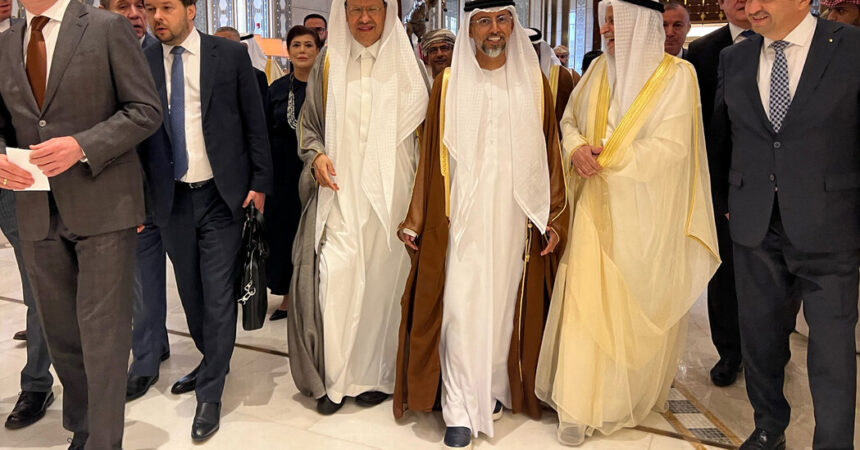When officials from major oil-producing countries met on Sunday, they had a tricky task before them: To reassure shaky markets that they would continue to restrain oil supplies.
The group known as OPEC Plus, which is led by Saudi Arabia and includes Russia, also wanted to offer some hope to discontented producers like the United Arab Emirates that they might soon get the go-ahead to pump more oil.
Not surprisingly, the deal reached in Riyadh, the Saudi capital, on Sunday is complex. It aims to bolster oil prices by promising that deep production cuts will extend through next year.
But it also spells out a gradual phase out of a portion of the cuts. Beginning in October, oil output for eight countries, including Saudi Arabia, the United Arab Emirates and Iraq, may gradually rise in monthly increments through 2025.
Saudi production, for instance, would increase to almost 10 million barrels a day toward the end of 2025 from around nine million barrels currently, according to a table released by the Saudi government. That level is still well below Saudi Arabia’s 12-million-barrel-a-day capacity.
Given the competing interests, the deal is all that the group could have achieved, according to one viewpoint.
“This is a decision that is about the here and now,” said Raad Alkadiri, a senior associate in energy security and climate change at the Center for Strategic and International Studies, a research organization in Washington. “This is short-term market management in action.”
Mr. Alkadiri said he thought that oil markets “would not be disappointed” with the package, knowing that OPEC Plus could always alter course if circumstances changed. Indeed, a news release from the group that met in Riyadh said that the “monthly increases can be paused or reversed, subject to market conditions.”
It’s also possible that this deal will be panned as not doing enough to reduce an oversupply of oil. “We are surprised that these countries are now announcing a detailed unwind” of cuts, given news of surprisingly high supplies, analysts from Goldman Sachs wrote after Sunday’s meeting.
Gary Ross, a veteran oil analyst, said that investors were already uneasy about oil. “I am not sure this agreement is going to make them feel any more secure,” said Mr. Ross, who is the chief executive of Black Gold Investors, a trading firm.
Since late 2022, OPEC Plus has been pushed into a complex series of output trims in an effort to bolster prices.
Producing countries have largely gone along with the market management program, but some countries have shown frustration at having to limit sales of a commodity that is crucial to many of their budgets.
The United Arab Emirates and Iraq, for instance, have been producing well above their agreed ceilings. This tactic seemed to have paid off for the U.A.E., which was awarded a gradual 300,000-barrel-a-day addition to its official ceiling.
The U.A.E. is investing heavily with foreign partners, including ConocoPhillips and TotalEnergies in France, to increase its ability to produce oil, and the country has chafed under what it has said is a ceiling that does not reflect reality.
Brent crude, the international benchmark, sold on Friday for about $82 a barrel, well under the levels above $100 a barrel reached in 2022 after Russia’s invasion of Ukraine but still high enough to earn hefty profits for western oil companies like Shell and Exxon Mobil.
Oil-producing countries, though, would like to see even higher prices to pay for development costs and social programs, analysts said. In an effort to squeeze even more funds from the oil industry, Saudi Arabia on Sunday offered a small percentage of the shares of the national oil company, Saudi Aramco, in a move that could raise as much as $13 billion.

